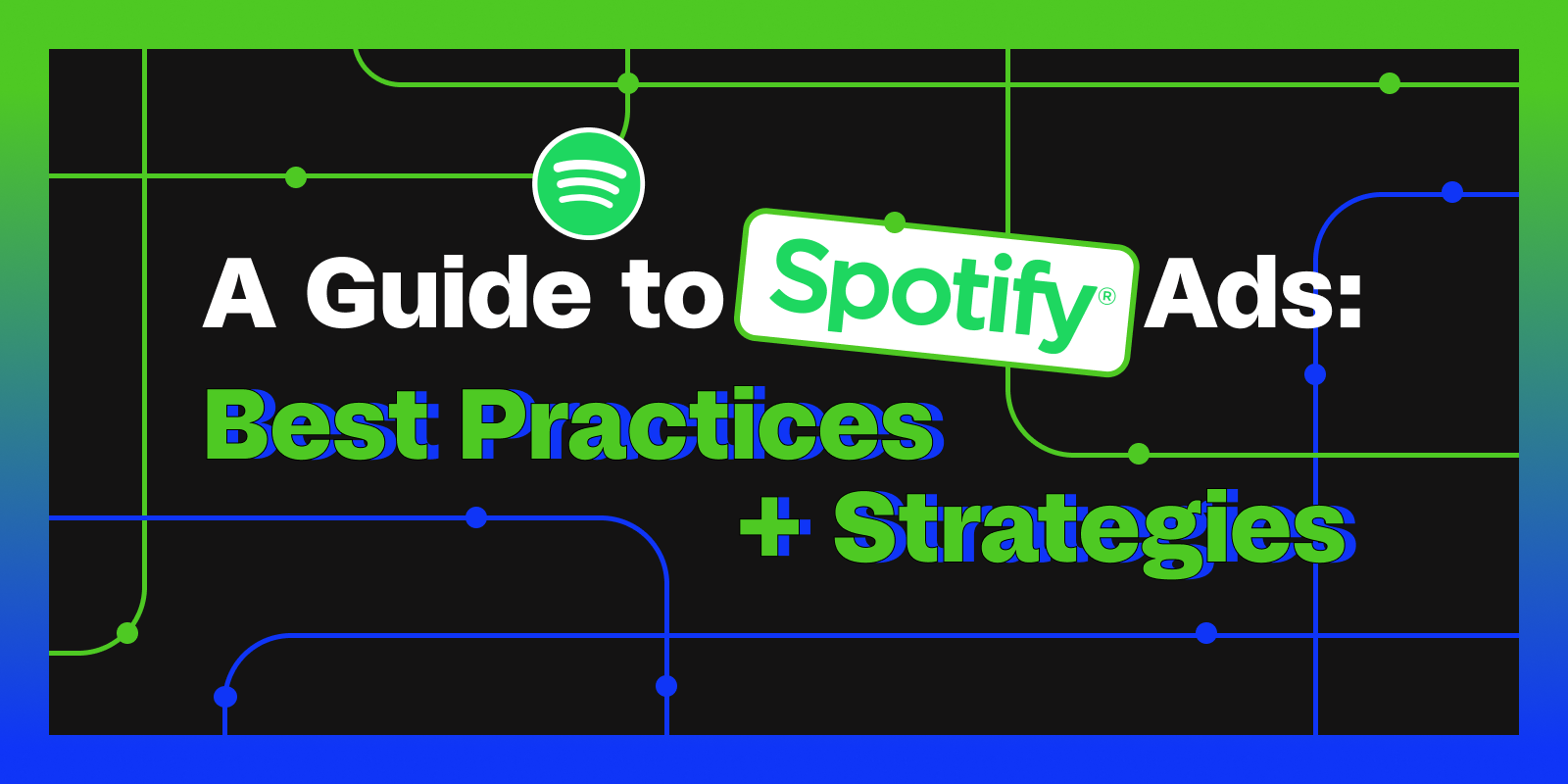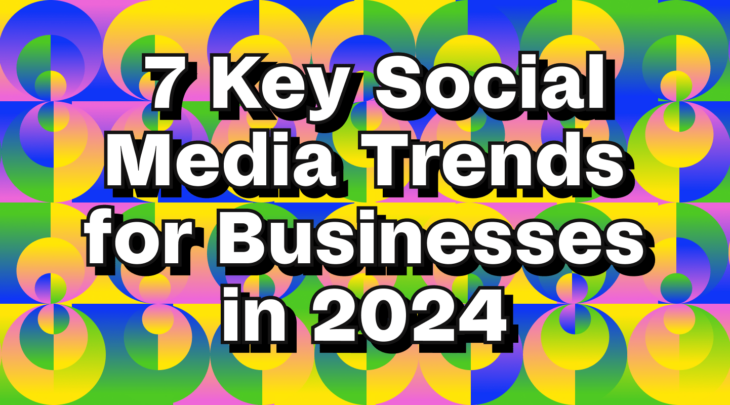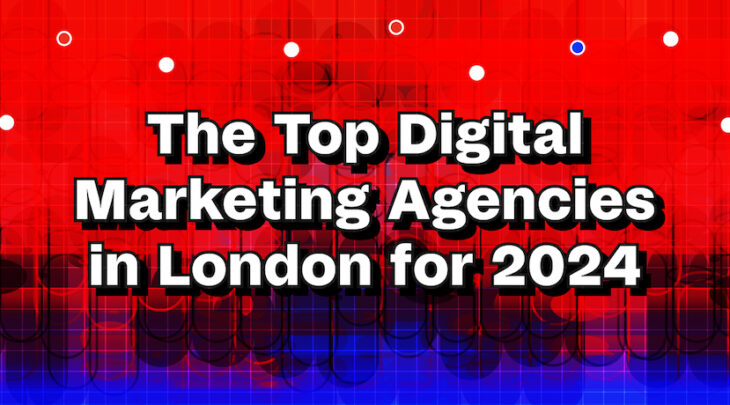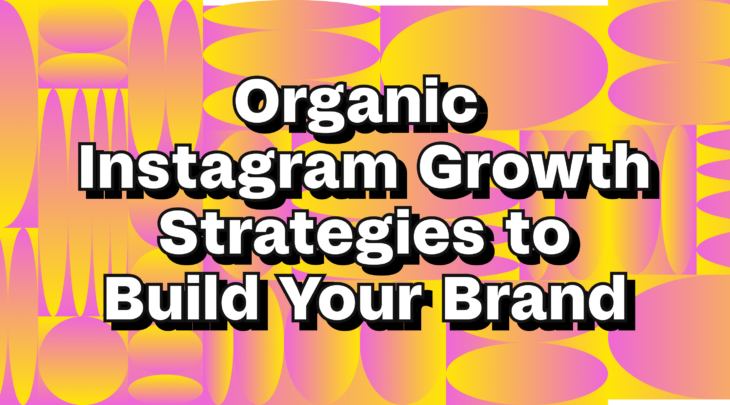When we think about digital advertising, we often think about Facebook and Google, but sometimes, getting creative and using more niche platforms can actually help you achieve your goals. One such platform that has been flying under the radar for the last few years is Spotify, and while it won’t work for every brand, it’s certainly worth considering and at least learning about!
Some brands are already using Spotify as a platform to promote themselves, and the results are exciting. Spotify has literally changed the way the world consumes music and audio content. With over 422 million monthly active users in over 80 global markets, it could be an attractive channel for your brand. The company boasts 182 million paid premium users and 220 million monthly active ad-supported listeners (As of Q4, 2023) who use Spotify to soundtrack their lives, with its user base growing about 30% YoY with no signs of slowing down. For reference, other big networks, such as Twitter and Pinterest, have around 500 million users.
Like its video counterpart, Netflix, Spotify focuses intensively on curation and customization to create an optimal user experience. However, unlike Netflix, Spotify offers users a free tier. Free users lack certain functionality and are subjected to advertisements every few minutes.
With sustained growth of about 15% year over year, Spotify is taking over the role radio once played, and with that, the company is taking audio advertising along for the ride. Unlike radio, however, Spotify knows exactly who is listening on each device and can give advertisers the ability to be hyper-targeted in their message and delivery. In addition, Spotify is much more personalized for its users than radio. In addition to being fed a curated list of songs or music that fit the theme of a particular radio station dedicated to a specific song or artist, Spotify users can also pick the exact songs they want to listen to, allowing Spotify to learn more about its individual listeners.
Over the past few years, Spotify has made a strong strategic push into podcasting to be seen as an audio company instead of just a music streaming company. In 2019 Spotify acquired Gimlet and Anchor, two companies serving different, distinct roles in the podcast industry. Gimlet was one of the world’s best content creators, with unique, celebrated podcast shows, and Anchor had completely reimagined the path to audio creation, enabling creation for the next generation of podcasters worldwide.
Based on radio industry data, Spotify believes that, over time, more than 20% of all Spotify listening will be non-music content. Through 2022, the company has continued to push into more original programming and buy exclusive rights to some of the most popular podcasters worldwide, such as The Joe Rogan Experience, a show consistently in the top 3 on Apple podcasts with an estimated 12 million monthly listeners. Spotify is also pushing into original content with shows like Michelle Obama’s podcast, which recently left the platform.
Need help with your brand’s venture into audio advertising? Contact a growth partner for the job.
Why You Should Consider Spotify Advertising
Brands must be present where their consumers are and find ways to engage with them effectively. It’s worth considering the difference in audience demographics among paid and free users, but according to Spotify’s internal data, the difference in household income is only about $5k.
Spotify enables brands to showcase their personality in a whole new way. Unlike other social platforms that, by nature, demand users’ attention, a customer can listen to an audio ad while going about their lives. Spotify doesn’t make sense for every brand or company, but for lifestyle brands, the ability to soundtrack a customer’s life is about as personal of a connection as you could hope to create.
The Basics of Marketing on Spotify – Spotify Ad Studio
1. Pick an Objective
Setting up an advertising campaign on Spotify is pretty similar to other social media platforms. To get started, you will need to create a Spotify account if you don’t already have one. Once you’ve done this, navigate to the Spotify Ad Studio. The minimum budget to run a Spotify campaign is $250, so if you aren’t looking to spend that, Spotify may not be for you.
To create an ad, you must first select your promotion. Spotify Ad Studio is unsurprisingly built with artists and media companies in mind to reach new listeners for their music, but for this article, we will exclusively be covering option 2 – ads for a non-music-related brand, product, or organization.
2. Format + Platform
The next step will be to select a format and platforms you want your ad to be seen or heard on. You can choose an audio ad, or if you have video creative, you can select vertical or horizontal video. When it comes to platforms, this selection will depend on the goal of your ad. Podcast ads via Streaming Ad Insertion are only available for brands with large budgets working directly with Spotify for Brands. Spotify recommends targeting all platforms unless the landing page you’re sending customers to is uniquely suited to desktop or mobile.
3. Schedule + Budget
Once you’ve selected the format and platform for your ad, the next step is choosing a budget and schedule. If you are running a campaign around a specific sale or event, make sure to adjust the schedule to match your needs. If you aren’t sure about the budget, you can always come back to change it once you’ve added more targeting information in the next steps and the budget delivery tool starts to estimate your potential reach and impact for the ad.
4. Audience
Choosing the right audience is the most crucial element to your campaign’s success. Spotify enables brands with unique ways to select an audience due to the audio-driven nature of the product. First, you must choose the demographic characteristics in terms of age, gender, and location you want to include in your target audience. Spotify enables marketers to get hyper-specific in targeting down to the zip code. For a business with physical locations, you wouldn’t want to target someone more than 20 minutes away, so Spotify gives you that control with an option to bulk upload zip codes to target.
Beyond demographic targeting, Spotify enables marketers to target interest-based audience segments crafted by analyzing users’ streaming behavior on Spotify alongside their broader interests and behaviors. You can only select one of the following additional options.
Interest
This allows you to target your audience based on their interests, as recent podcasts and playlist listening indicate. Interest targeting is pretty self-explanatory; if your target market shows an affinity for any of these general interests, this will likely be a strong option for your ads.
Real-Time Context
This allows you to reach people listening to music tailored to specific activities, moments, and moods. Spotify has many curated playlists for users to soundtrack moments of their lives, like while studying or working out. As a marketer, if your product or event has some relation to any of these moments, this could be a powerful contextual placement that is not possible on any other ad platform. If you choose to use this targeting option, it’s essential to consider the activity and what a consumer may be annoyed to hear. For example, if you’re selling an energy drink, targeting focus or study context could make sense, but it would be important to make your ad relaxed and not too distracting because this could annoy someone trying to stay focused. You can select multiple real-time contexts to expand your potential audience.
Genre
The last option targets people based on the genre of the song they heard immediately before hearing your ad. This targeting option has limited power beyond music ads unless your brand strongly associates with a specific musical culture or genre. Alternatively, you could leverage this targeting method by creating different ad variations and changing background music and copy to target your chosen genre for cohesion with user listening.
You can also choose no additional targeting, hitting the widest possible audience within the demographic constraints you chose to start. Once you’ve selected these parameters, you will see an estimate for reach, frequency, and the number of ads served, along with a cost per ad served.
Creative
This will depend primarily on your chosen format in the first steps of setting up your ad.
If you already have a pre-produced audio or video ad, you can upload it. If you don’t have a pre-produced ad, Spotify can also help you create and produce an audio ad using their free voiceover tool. Spotify also offers resources to help you write a quality audio ad.
Grab people’s attention with one or two powerful, simple, and easily conveyed messages that will drive people to buy your product or service. Your ad needs a clear call to action that drives the customer to do something. This could include a limited-time offer, the store’s location to visit, the website to go to, or some other desired action.
After you write the ad copy, select a language and a voice profile. When requesting a voiceover, you can now hear a sample of a voice actor with a similar voice profile to help you make your pick. Like how you would for any other ad, think about who you are talking to and your ultimate goal. Next, you’ll need to select some background music. You can choose something in the Spotify library or upload your own. The final step in creating your voice-over ad is adding notes to help the voice actor understand your script’s emotion, tone, and speed.
If you’ve selected an audio ad, you’ll also need an image, a clickthrough link, a call to action, and an Advertiser name. You can now also feature your business name more prominently and add descriptive tagline text to your audio ads to provide listeners with even more information on your product or brand.
Looking for expert ads and production podcasting companies?
Spotify Ads Best Practices
Personalize ads for higher engagement
Ads are personalized to the listener to see higher engagement. If you’re targeting a specific location, consider mentioning it – for example, say, “Hey Boston!” Also, try matching background music to the tastes of your target audience.
Align with the environment
Depending on the strategy, your ads can be heard across different contexts, so make sure to consider the listening experience. Fit into the moment your listener is in, and they’ll welcome you back.
Use a conversational tone
Digital audio ads are not radio ads, so leave behind those loud, shouty voices, amped-up sound effects, and sing-songy jingles. Using a more casual, familiar voice, you create a seamless transition from audio to advertising, increasing your chances of effectively reaching your audience. Remember, audio ads should complement the experience, not distract from it.
Develop a clear, to-the-point message
The more information the message contains, the less the listeners will remember. Instead, outline your key product benefits clearly and succinctly, and tell your story in a way that the listener can relate to. For a 30-second ad, aim for between 55-75 words. Another tip: treat audio as its own medium instead of adapting a commercial into an audio story.
Incentivize listeners with a call-to-action
As the advertiser, it’s your job to provide listeners with clear next steps: Do you want them to visit your website? Fill out a survey. Buy something? With any campaign, it’s critical to determine your KPIs upfront so that you can clearly measure the results post-campaign.
Get creative with audio to open the imagination of listeners
Audio elevates storytelling. When we hear a soundscape or a sonic picture, our imaginations kick in to complete the story in our minds. From the sounds of a cheering crowd to the crunch of a chip and a satisfied “Mmm,” to sneaker squeaks on a court followed by the swoosh of a basketball hitting net, the sound draws the listener’s imagination into the brand story. Furthermore, listeners associate certain sounds with their memories to help complete that story, making it more personal and engaging.
Use Multiple Formats in the same campaign
Spotify has found that a mixture of ad formats works best. For example, mixing audio and display results in a 24 percent increase in ad recall for those formats.
Engage organically with customers already on Spotify
According to reports, around a third of users’ listening time is spent on Spotify-generated playlists. However, another third also goes on user-generated playlists (which anyone can create and share on the platform).
This can be a good option for brands who want to engage users and increase organic reach, with branded playlists acting as an audible representation of a company or its product or service. Gymshark, for example, has a number of branded playlists available on its profile, which include playlists created by its brand ambassadors (or influencers), as well as general playlists related to a specific style of training, sport or genre.
Retail brands use Spotify to align online and offline experiences, with the likes of H&M and Zara using the platform to collate music played in stores and offer customers soundtracks for other occasions.
Alternatively, you can be like Wendy’s and release a diss tape on competitors featuring tracks like “4 for $4” and “Rest in Grease”.
How much does it cost to advertise on Spotify?
The minimum budget for using the self-serve ad studio is $250.
Companies with budgets over 25k monthly can work directly with Spotify, gaining access to further third-party targeting data and more ad format options. Further ad formats include Sponsored Sessions, Podcast Streaming Ad Insertions, and Video Takeover. Additionally, companies can utilize display ad units that can show up on opening, on the homepage, or within playlists.
Brands can also work with Sponsored Playlists, allowing brands to maximize awareness by exclusively sponsoring Spotify’s top-owned & operated playlists. Spotify playlists already have passionate, loyal fan bases ensuring that your brand is really amplified and seen. The Spotify team will also help you choose which best aligns with your target audience.
Podcast Advertising
In early 2020, Spotify introduced a new product called “Streaming Ad Insertion,” enabling advertisers to insert ads into podcasts dynamically. Previously, prerecorded ads lived within podcasts indefinitely, hindering marketers from achieving the scale they often desire. Two people listening to the same podcast will now hear different ads. Previously, podcast impressions were measured by downloads similar to print ads and, as a result, lacked the granularity of who was actually being reached. Streaming Ad Insertion will allow advertisers further insights into impressions for their ads, including their age, gender, device type, and more.
Over a third of Americans now listen to podcasts; the most engaged among them are listening to more. Podcasts are a uniquely effective environment: 41% of listeners say they trust ads more if they hear them in a podcast, and 81% report having taken action after hearing a podcast ad. Many podcasts encourage listeners to dive deep into topics they’ve actively chosen to engage with — which means podcasts offer that “holy grail” moment for brands to reach their target audience.
In June, the company announced that it’s testing a new feature called “In-App Offers” that gives podcasts the ability to keep an embedded link on their episode pages that, when tapped, leads to an advertiser’s webpage. That webpage will automatically load with the promo code inserted. This way, people don’t have to remember podcast ads’ promo codes or go out of their way to find an advertiser’s website. The new feature is apparently just the start for Spotify’s interactive ads as they continue to look for ways to “create more of a direct funnel for brands.”
Examples of Successful Campaigns
Spotify has a whole page of case studies, so we’ll let them do the selling here, but we have a couple of favorites.
KFC x Cinnabon Dessert Biscuits
With a targeted audio campaign, KFC wanted to drive in-store visits and awareness of their free Cinnabon Dessert Biscuits offer. The brand’s effective mobile audio ads reached listeners who were streaming in moments throughout their day — and the accompanying visual assets teased just how delicious the meal would be.
Here are a few key takeaways:
- KFC’s targeted campaign drove 85,000 visits to KFC locations.
- The incentive for a free Cinnabon dessert helped drive a 17% behavioral lift in-store visits.
- This outperformed Placed’s benchmark for QSR (Quick Service Restaurants) by 3.4x, proving that relevant targeting drives impact.
Allbirds Holiday Campaign
For their holiday campaign, Allbirds aimed to improve awareness and perception of their shoes among millennials in the U.S. and the U.K. Allbirds relied on Spotify’s streaming intelligence to reach their target audiences: men and women, ages 25 to 44, who fell into one or more of a few select audience segments — including Health and Wellness, Foodies, Outdoor Enthusiasts, and Green Buyers.
A few key takeaways:
- By serving smart creative to targeted listeners primed to receive their message, Allbirds saw a 457% boost in brand awareness compared to a control audience.
- With audio and video showing fictional consumers’ dedication to their product, Allbirds saw a 333% lift in the brand’s association with comfort.
- By maximizing their exposure while driving home their commitment to sustainable materials, Allbirds saw a 367% bump in positive opinion.
Conclusion
Being where your consumers are is crucial for brands, and effective engagement is key. Audio stands out as a digital medium that allows listeners to engage without the need to tap or swipe a screen. Success in audio advertising, like any ad format, hinges on targeting the right audience with the right message. While Spotify ads may feel intrusive to the wrong audience, leveraging the channel appropriately can lead to remarkable success.
Looking for a growth partner to help your brand explore audio advertising?










